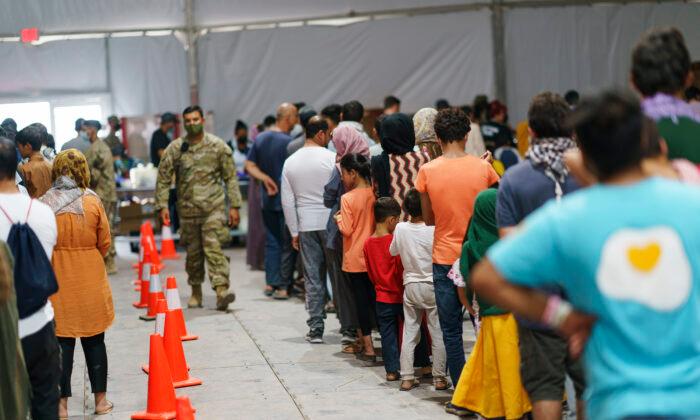The Biden administration said on Monday it will double the refugee admissions cap to 125,000 in fiscal year 2022 from the current cap of 62,500.
Fiscal Year 2022 begins on Oct. 1. The State Department announced that it has sent a report to the House and Senate Judiciary Committees that recommends the refugee cap increase “to address needs generated by humanitarian crises around the globe.”
In particular, the new admissions target plans to focus on certain populations and programs, including: “expanded resettlement of Central Americans; enhanced access to the USRAP for Afghans at risk due to their affiliation with the United States; increased resettlement of LGBTQI+ refugees; priority access for at-risk Uyghurs, Hong Kong refugees, and Burmese dissidents; and resettlement of Burmese Rohingya.”
The report lays out the new refugee caps by region: 40,000 refugees from Africa; 15,000 from East Asia; 10,000 from Europe and Central Asia; 15,000 from Latin America and the Caribbean; 35,000 from the Near East and South Asia; and 10,000 in “unallocated reserve to be used if needed in any region.”
State Department spokesperson Ned Price said in a statement that the latest move “is reaffirming our commitment to refugee resettlement in line with our long tradition of providing a safe haven and opportunity to individuals fleeing persecution.”
“With the world facing unprecedented global displacement and humanitarian needs, the United States is committed to leading efforts to provide protection and promote durable solutions to humanitarian crises, to include providing resettlement for the most vulnerable,” the statement reads.
“A robust refugee admissions program is critical to U.S. foreign policy interests and national security objectives, and is a reflection of core American values,” Price said in the statement. “The United States has long been a global leader in refugee resettlement.”
Some members of Congress have voiced their support for the administration over the measure.
They added, “We look forward to working with the Biden Administration to restore this life saving program and our reputation as a leader in providing refuge to those fleeing persecution around the globe.”
Senate Majority Whip Dick Durbin (D-Ill.) also praised the Biden administration, saying he had been advocating for the high refugee cap since April.
Meanwhile, communities facing the border crisis at the south are grappling with the worst border numbers in history, driven by Biden’s policies that have, so far, allowed a large portion of illegal immigrants to stay in the United States.
However, the “rather sudden” surge of immigrants has prompted a large-scale response from the federal government, including moving some 6,500 immigrants from Del Rio to other parts of the border to ease the burden on the overtaxed agents.
In recent weeks, thousands of illegal immigrants have amassed near the Texas border but are now leaving the United States, returning to Mexico to pick up supplies or to avoid being deported back to their home countries.






Friends Read Free